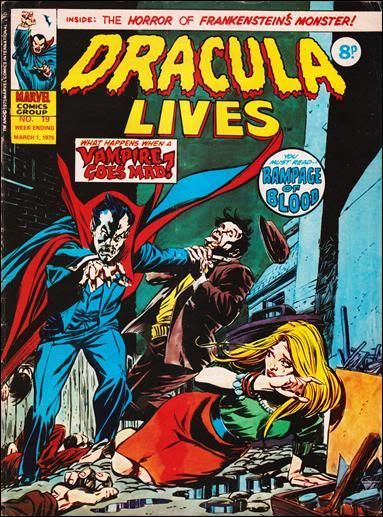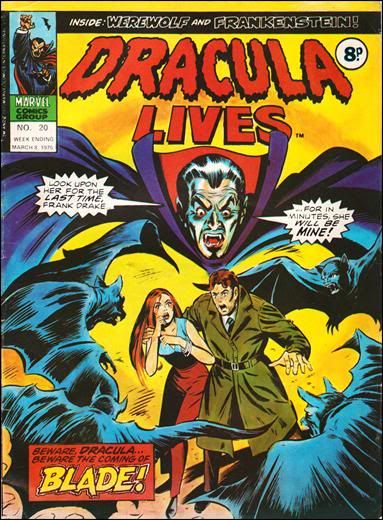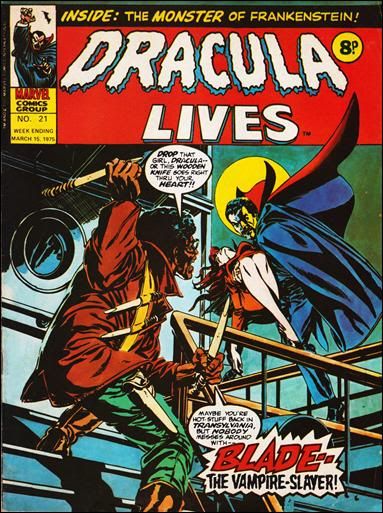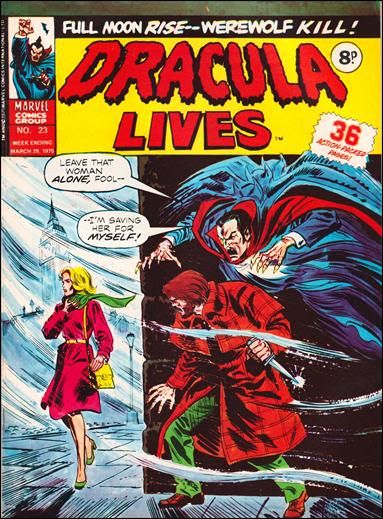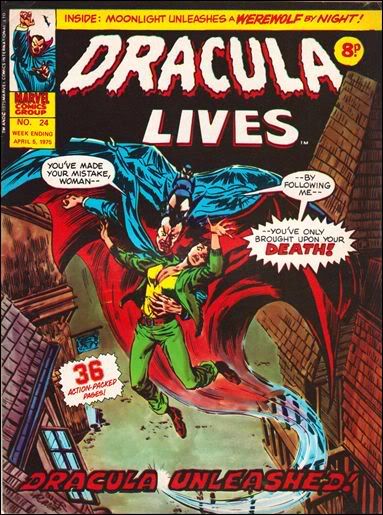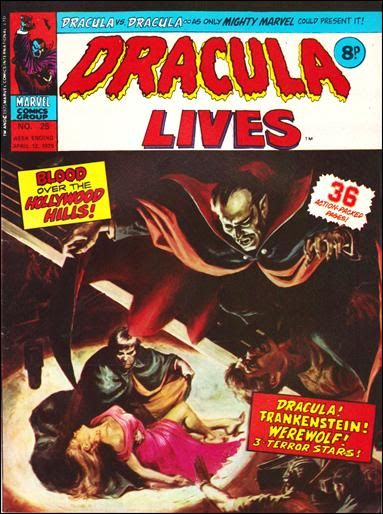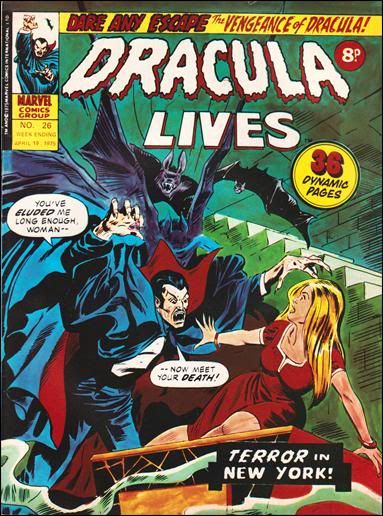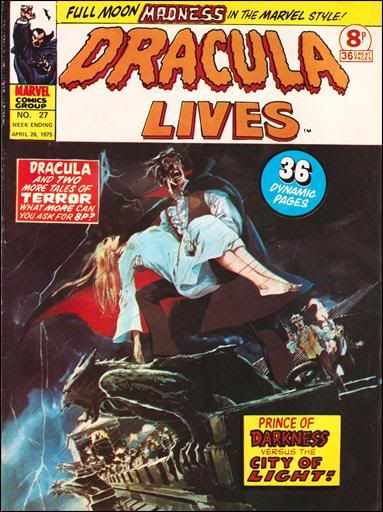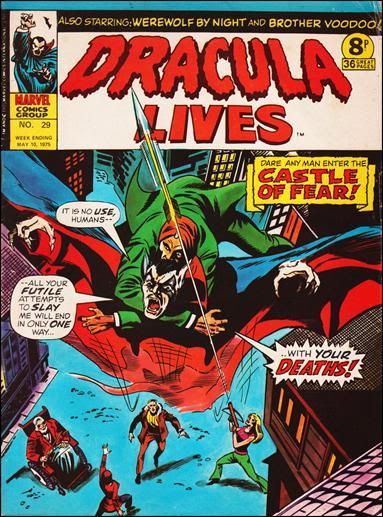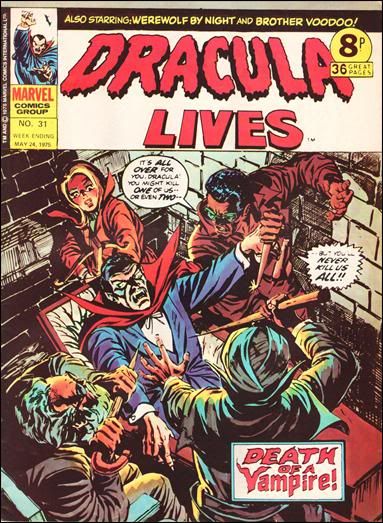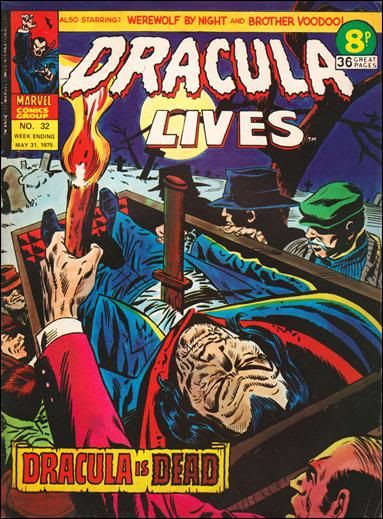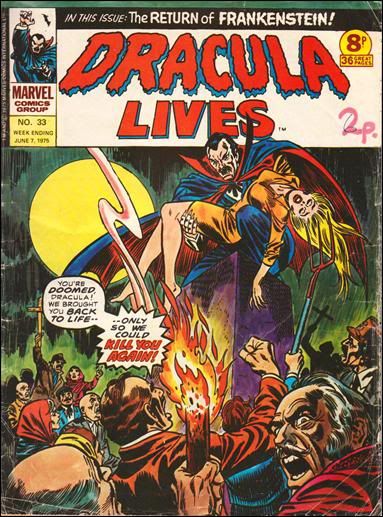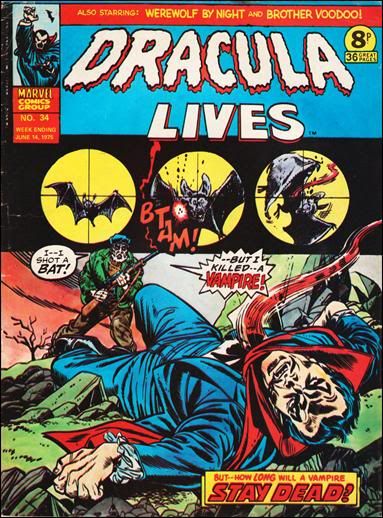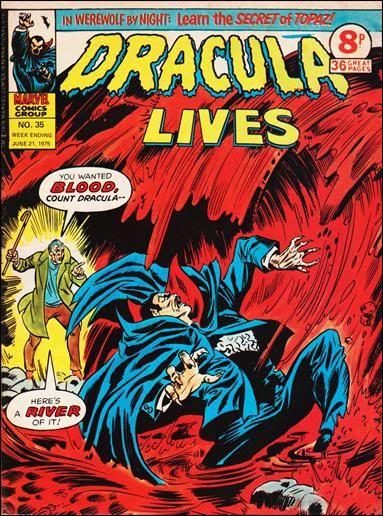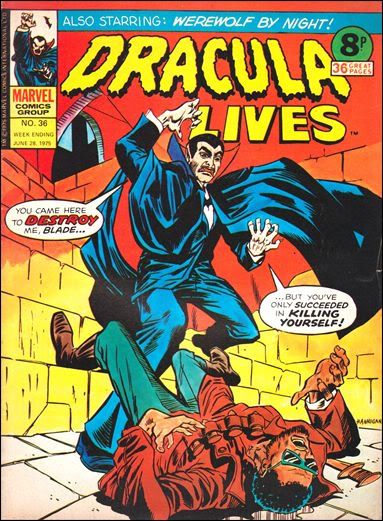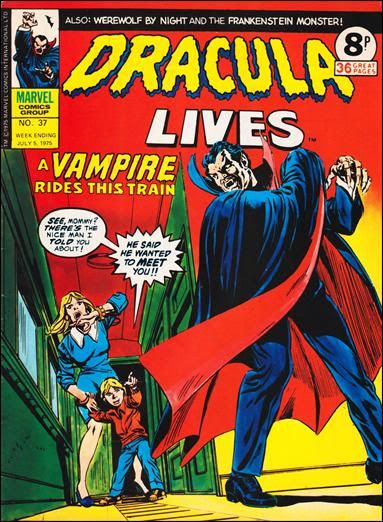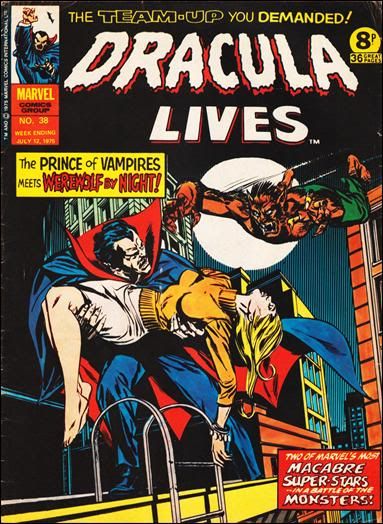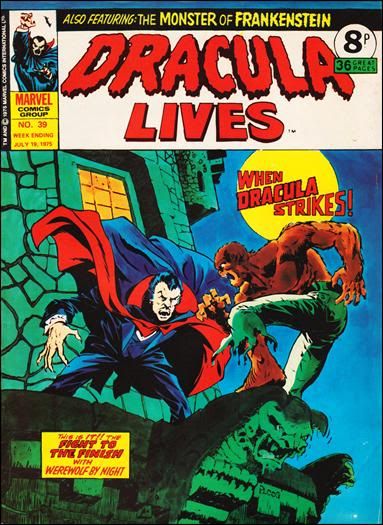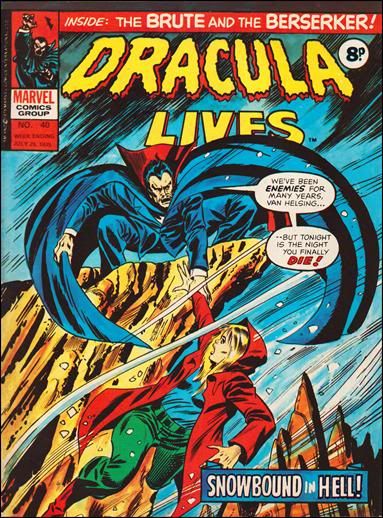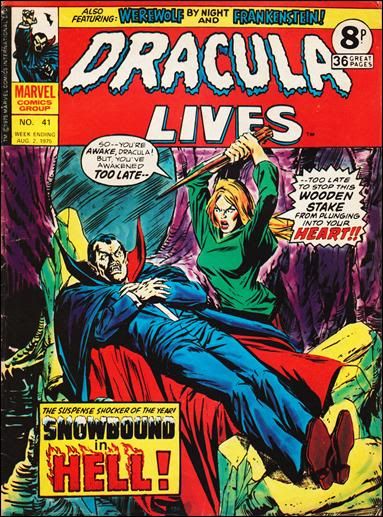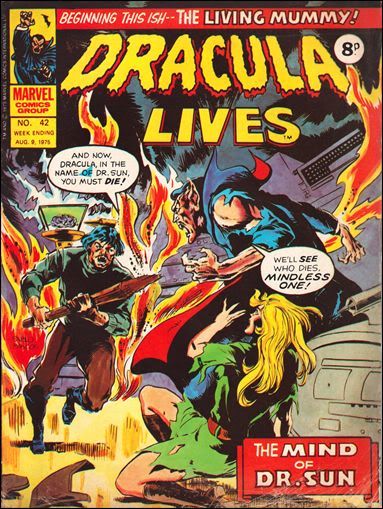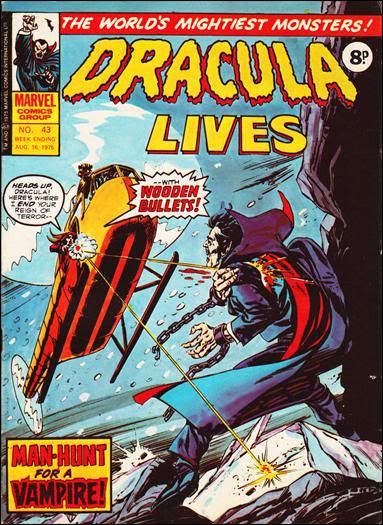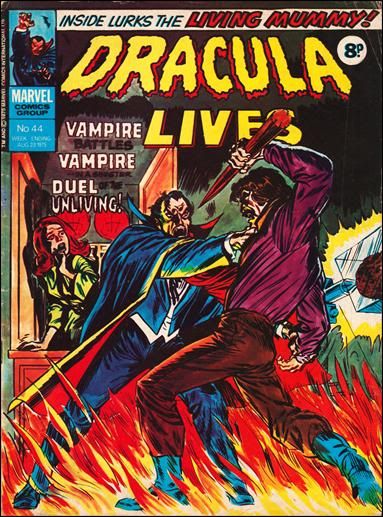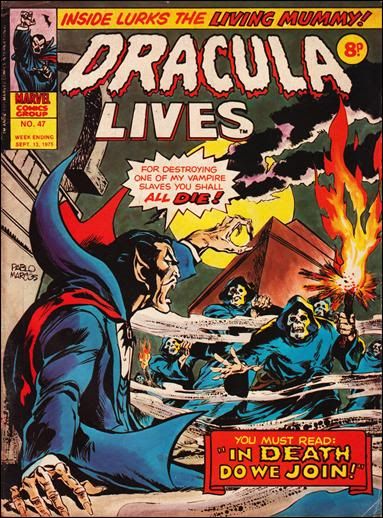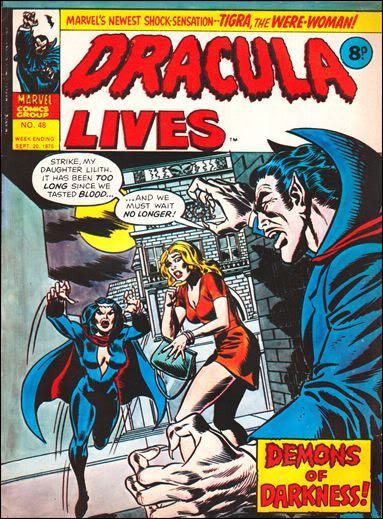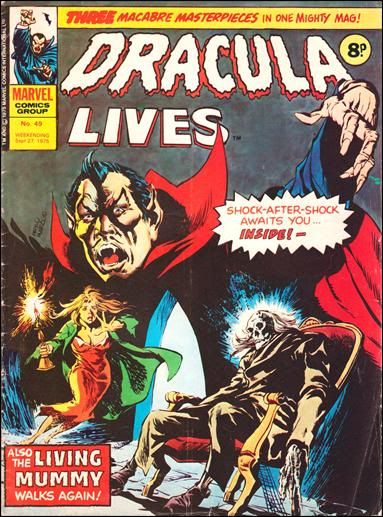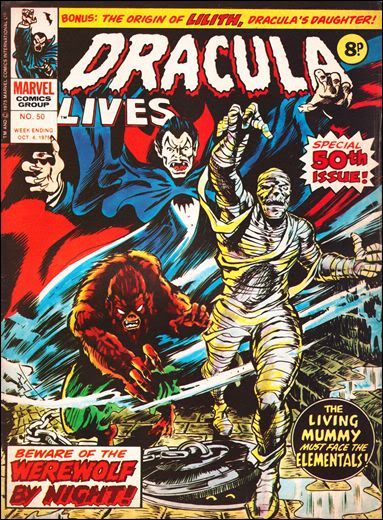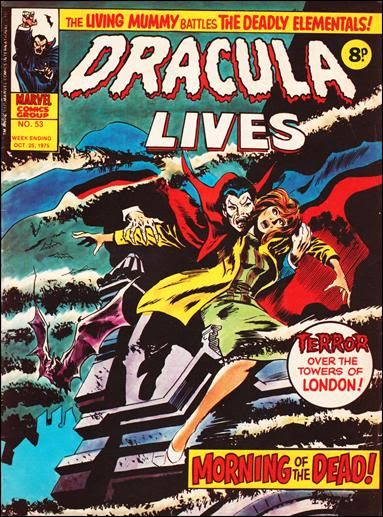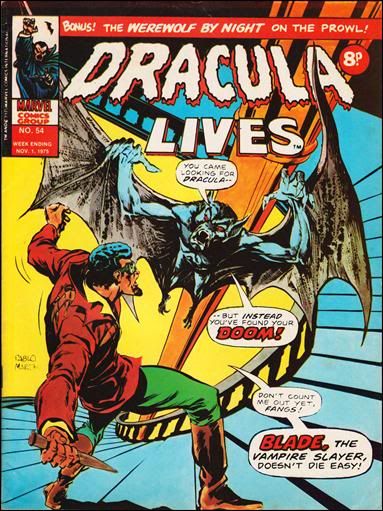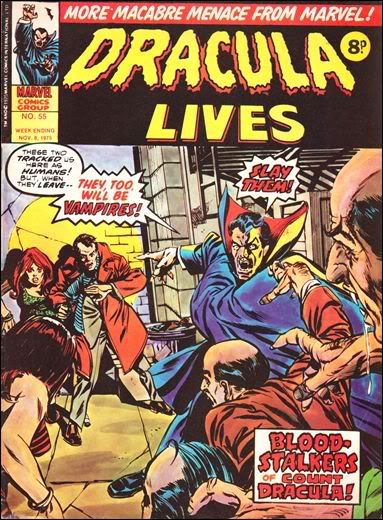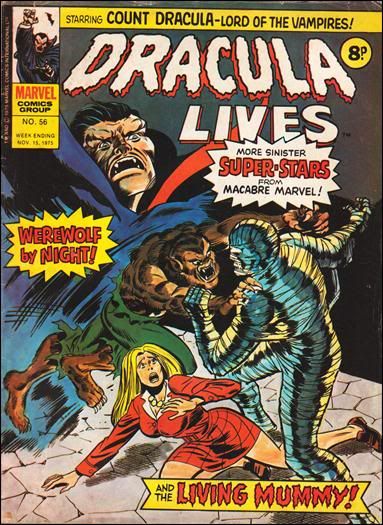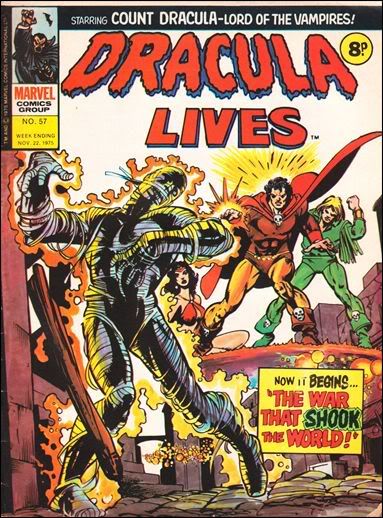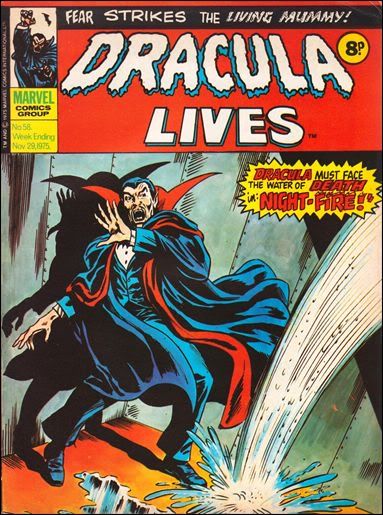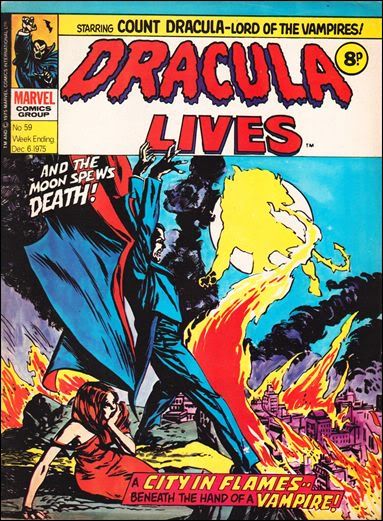Post by MacNimon on Jul 19, 2011 15:53:16 GMT
In America, Marvel Comics Group was in the process of change which had started around 1970, when there was a very substantial diversification from the House of Ideas as it moved from the 1960's Silver Age to the 1970's Bronze Age period; ie the addition of a new range of horror characters and comic book titles, together with other non-superhero genres such as sword and sorcery, fantasy and science-fiction comics.
By mid-1974, the success of Marvel UK's three weeklies had them considering further expansion, and this move would - with the horror and fantasy genres being at the height of their popularity in the US market - almost inevitably point to additional material which would complement the so far superhero-only publications. The move happened on 26 October 1974 when two new weeklies were launched simultaneously: Dracula Lives and Planet of the Apes.
Marvel's most successful venture into the realm of horror was the introduction of Dracula, the lord of vampires created by Bram Stoker in his classic 1897 novel, to the ranks of Marvel's characters through his own title, Tomb of Dracula in April 1972 (the extension to the vampire count's name was necessary for Marvel to be able to copyright the title). The book ran for a total of 70 issues in the US before cancellation came in August 1979 after the longest run of any Bronze Age Marvel horror genre title. Writer Marv Wolfman and artist Gene Colan (with Tom Palmer inking) weaved an ongoing saga which plotted the vampire count against the group of vampire hunters and others who sought to put an end to his existence.
Tomb of Dracula is a comic book classic beyond its genre, and - as the jewel in the crown of Marvel's bronze age horror world - a logical choice for Marvel UK when it came to expanding its range of weeklies. However, in a slightly confusing move, the reprints of Tomb of Dracula were launched in Great Britain under the title of Dracula Lives, which was the existing title of Marvel's US black and white magazine format comic book featuring the count since June 1973.
Other than reprints of The Tomb of Dracula as the lead feature, Dracula Lives started out with back-up material from The Monster of Frankenstein and Werewolf by Night. As the fairly short-lived Frankenstein material came to an end, this slot was filled with the Living Mummy as of issue #42 in August 1975 in order to keep up the established formula with "three macabre masterpieces every issue". The weekly publication schedule resulted in a pronounced volatility of the UK comic book market in comparison to America's monthly or even bi-monthly installments, and only four months later the title of Marvel UK's horror weekly was expanded as of issue #60 in December 1975 to Dracula Lives featuring The Legion of Monsters - with no change to its featured contents.
See www.panelology.info/Marvel/Marvel-UK-2.html for more details.
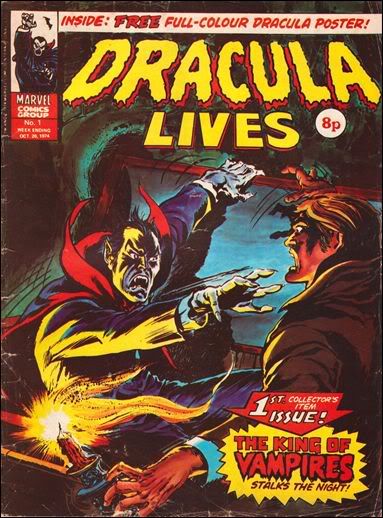
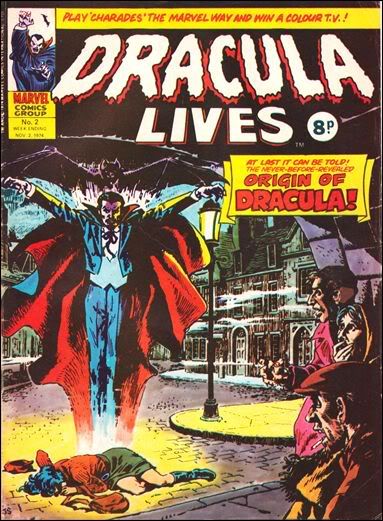
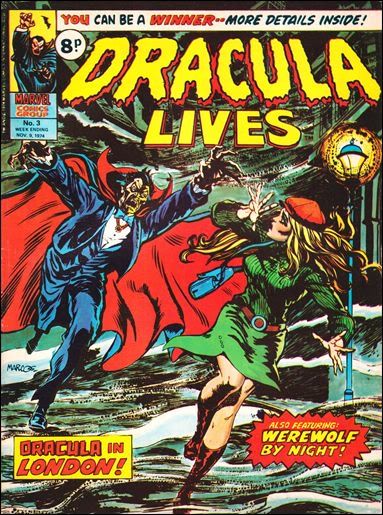
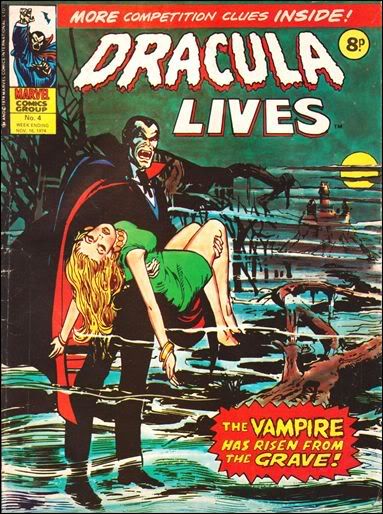
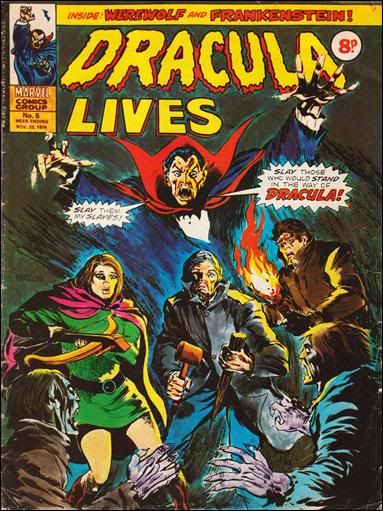


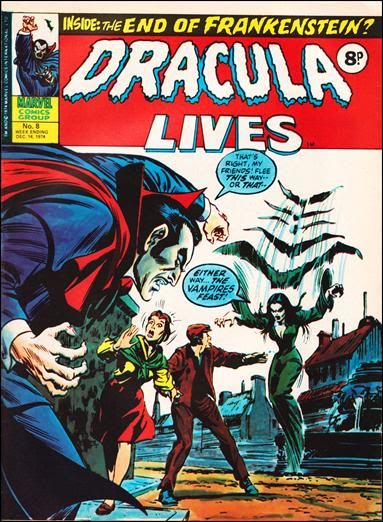
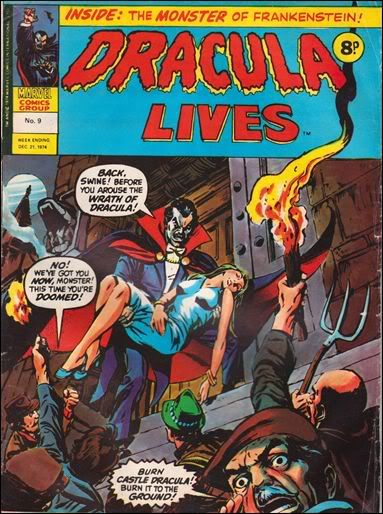
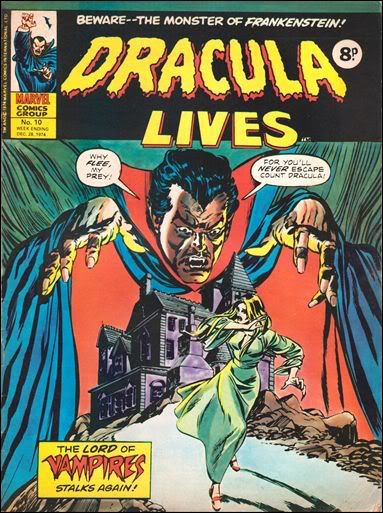
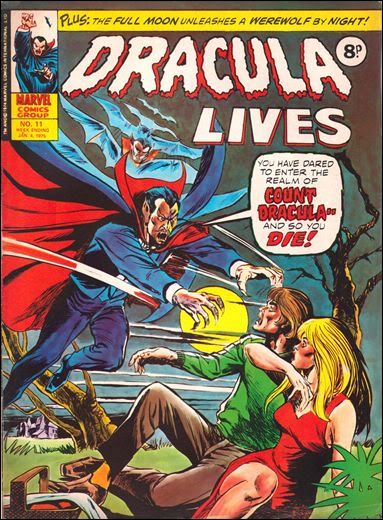
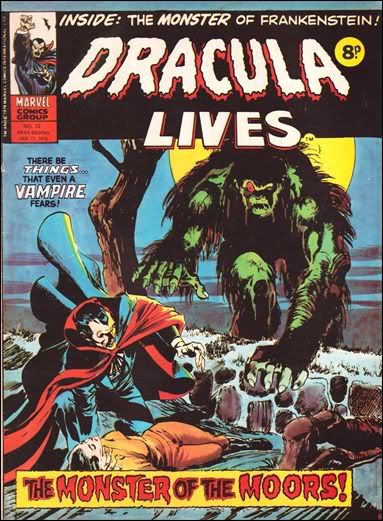
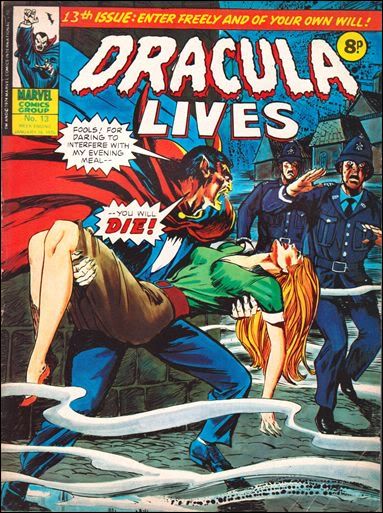
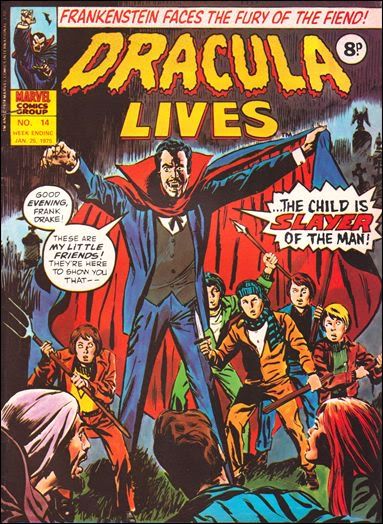

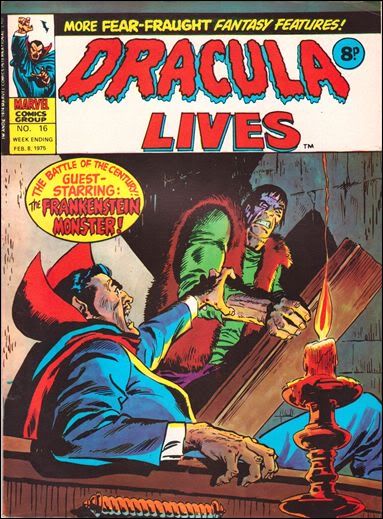
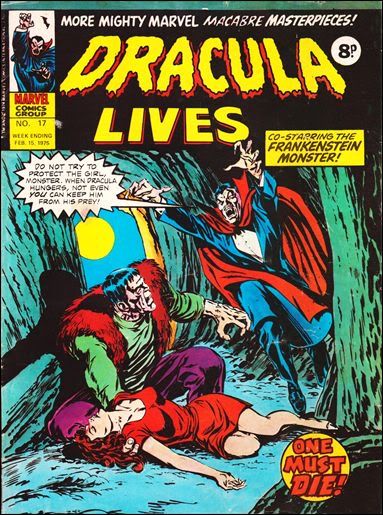

By mid-1974, the success of Marvel UK's three weeklies had them considering further expansion, and this move would - with the horror and fantasy genres being at the height of their popularity in the US market - almost inevitably point to additional material which would complement the so far superhero-only publications. The move happened on 26 October 1974 when two new weeklies were launched simultaneously: Dracula Lives and Planet of the Apes.
Marvel's most successful venture into the realm of horror was the introduction of Dracula, the lord of vampires created by Bram Stoker in his classic 1897 novel, to the ranks of Marvel's characters through his own title, Tomb of Dracula in April 1972 (the extension to the vampire count's name was necessary for Marvel to be able to copyright the title). The book ran for a total of 70 issues in the US before cancellation came in August 1979 after the longest run of any Bronze Age Marvel horror genre title. Writer Marv Wolfman and artist Gene Colan (with Tom Palmer inking) weaved an ongoing saga which plotted the vampire count against the group of vampire hunters and others who sought to put an end to his existence.
Tomb of Dracula is a comic book classic beyond its genre, and - as the jewel in the crown of Marvel's bronze age horror world - a logical choice for Marvel UK when it came to expanding its range of weeklies. However, in a slightly confusing move, the reprints of Tomb of Dracula were launched in Great Britain under the title of Dracula Lives, which was the existing title of Marvel's US black and white magazine format comic book featuring the count since June 1973.
Other than reprints of The Tomb of Dracula as the lead feature, Dracula Lives started out with back-up material from The Monster of Frankenstein and Werewolf by Night. As the fairly short-lived Frankenstein material came to an end, this slot was filled with the Living Mummy as of issue #42 in August 1975 in order to keep up the established formula with "three macabre masterpieces every issue". The weekly publication schedule resulted in a pronounced volatility of the UK comic book market in comparison to America's monthly or even bi-monthly installments, and only four months later the title of Marvel UK's horror weekly was expanded as of issue #60 in December 1975 to Dracula Lives featuring The Legion of Monsters - with no change to its featured contents.
See www.panelology.info/Marvel/Marvel-UK-2.html for more details.





















